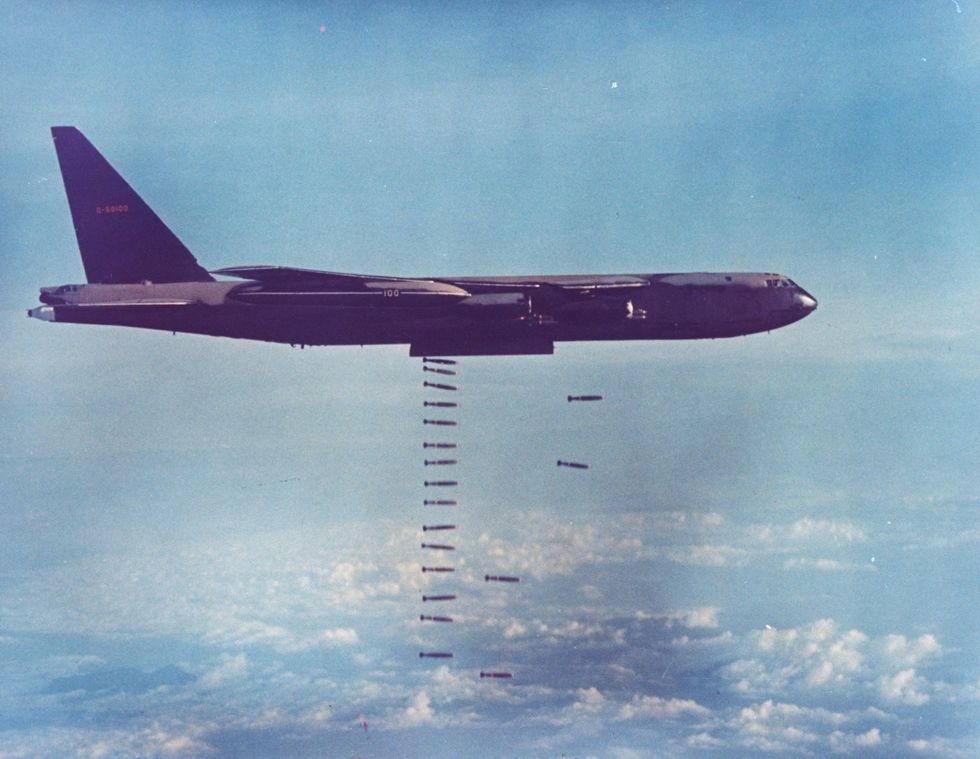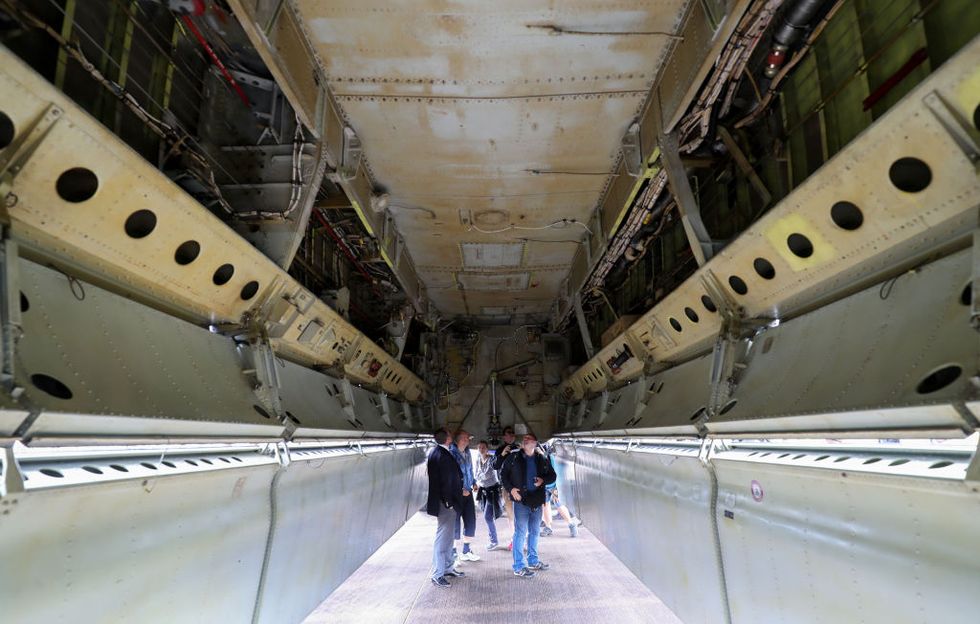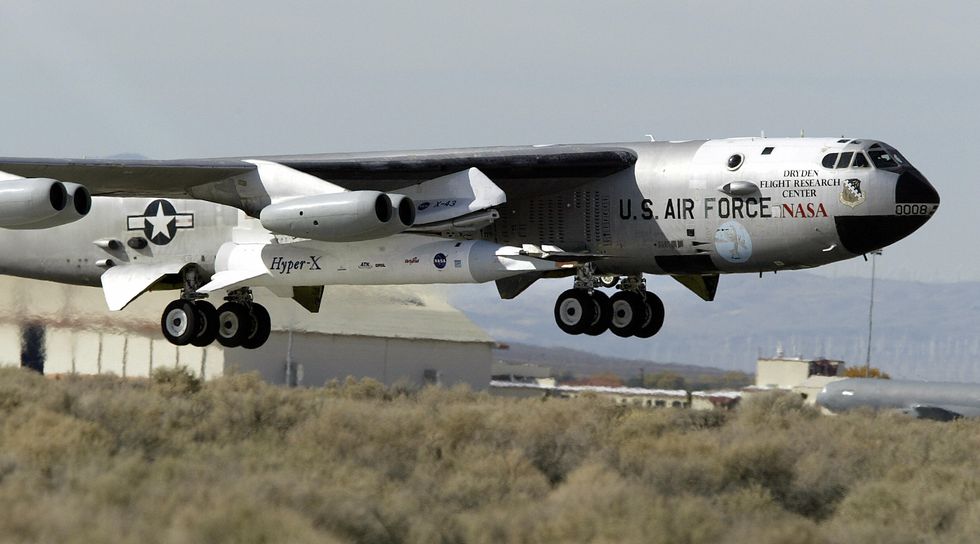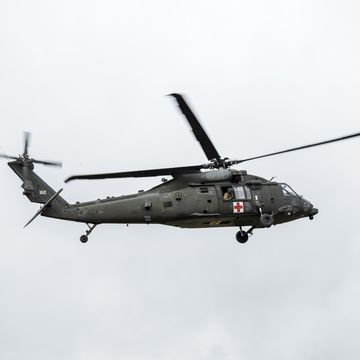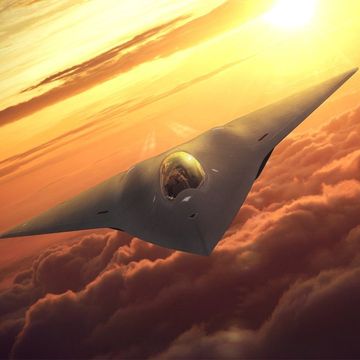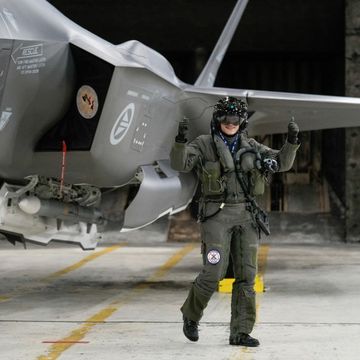A series of upgrades to the B-52 Stratofortress bomber could keep the remaining fleet of Cold War bombers going until 2050. The planes, built during the Kennedy Administration, are expected to receive new engines, electronics, and bomb bay upgrades to keep them viable in nuclear and conventional roles.
The B-52 strategic heavy bomber is a true survivor. It was designed to fly high over the Soviet Union carrying atomic bombs if necessary. But the B-52 is the do-it-all tool of strike warfare, taking on whatever mission is popular at the time.
B-52s were modified to drop conventional bombs during the Vietnam War, where they proved they could fly low to penetrate enemy defenses, gained the ability to drop precision-guided bombs, and swapped their nuclear bomb loads for nuclear-tipped cruise missiles. The B-52s also can carry Harpoon anti-ship missiles, lay minefields at sea, and provide close air support to troops on the ground. B-52s have even flirted with air-to-air warfare, with their tail gunners reportedly shooting down two MiG-21 fighters over Vietnam.
Of the original 102 B-52Hs built between 1961 and 1962, 76 are still flying with the Air Force’s Global Strike Command and Air Force reserve. B-52s regularly fly to Europe and Asia, and in early June, two B-52s stationed on the island of Guam flew to the South China Sea in protest of Chinese territorial claims.
Now the U.S. Air Force is embarking on a series of major upgrades that could give the B-52 another 30 years of service. According to National Defense, a key improvement will be re-engining the big bomber. Each B-52 still operates eight original TF-33-103 engines. Not only are those engines generations behind the state of the art, but their age, and the difficulty to source spare parts, puts their future use in jeopardy—a problem Popular Mechanics covered last year. Rolls-Royce, Pratt & Whitney, and GE Aviation have all expressed interest in the new B-52 engine, but only Pratt and Whitney has actually chosen a potential replacement: the PW815 engine used in the Gulfstream G500 passenger jet.
The Air Force would like to replace the bomber's APQ-166 terrain following and mapping radars, which are essential for low-level flight. A bomb bay upgrade will allow the B-52 to carry JDAM satellite-guided bombs and Joint Air-to-Surface Standoff Missiles (JASSM) in its internal bay. Storing weapons internally reduces drag, increasing range. Alternately a B-52 could carry both internal and external stores. A single B-52 can carry eight JASSMs internally and twelve externally, for a total of 20 of the precision attack missiles.
B-52s are also getting a moving map display, improved voice and data communications, new information displays at all of the crew stations, and low and extremely high frequency communications equipment for both conventional and nuclear missions.
How would the B-52 use all of this new equipment to stay relevant on the battlefield? As a large aircraft with the radar signature of a barn door, adversaries can see a B-52 coming from miles away. That said, a B-52 can fire missiles like JASSM from beyond radar detection range. In wartime, a B-52 could work with a stealthy aircraft like the F-35 to launch missiles against time-sensitive targets. A F-35, while flying stealthy, can carry a limited amount of weapons, but it could spot targets at sea or on the ground and relay targeting data to a B-52 hundreds of miles away.
Another mission the B-52 could pick up is becoming a platform for hypersonic weapons. The Air Force is pursuing the Arrow and Hacksaw hypersonic weapons programs, and a large, lumbering aircraft with plenty of external weapons pylons like the B-52 is perfect for the role.
The Air Force’s fleet of B-52Hs will be approximately 90 years old in 2050. 2050 is probably the end of the line for the old bomber, as the airframes will eventually just plain wear out. Not all B-52s will make it to the finish line. The cost of upgrades and the introduction of the B-21 Raider bomber will probably mean retirement for some of the 76 jets in the name of cost savings.
Still, the old bomber’s career is by any measurement extraordinary: in the 1990s, it was commonly said that a B-52 pilot could fly the same plane his or her father flew. By the 2040s it will be theoretically possible for a B-52 crew to fly the same plane his or her great-grandfather flew.

Kyle Mizokami is a writer on defense and security issues and has been at Popular Mechanics since 2015. If it involves explosions or projectiles, he's generally in favor of it. Kyle’s articles have appeared at The Daily Beast, U.S. Naval Institute News, The Diplomat, Foreign Policy, Combat Aircraft Monthly, VICE News, and others. He lives in San Francisco.

